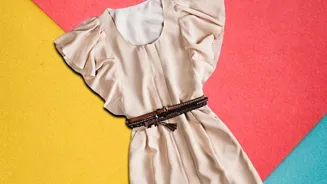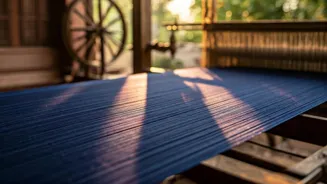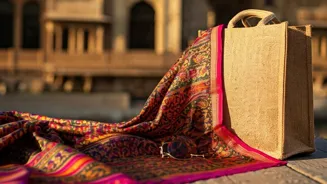Unlock the secrets to keeping your clothes vibrant & stylish for years! Delve into washing, drying, ironing, & storage tips
In a country like India, where festivals are celebrated with vibrant colours and
traditions are woven into every fabric, our clothes are more than just coverings – they are a reflection of our identity and heritage.

From the simplest cotton kurta to the most elaborate silk saree, each garment tells a story. But with changing climates, bustling lifestyles, and the constant hum of daily life, keeping our clothes looking their best can be a challenge. Worry not, dear readers!
This article is your ultimate guide to ensuring your beloved clothes stay vibrant, stylish, and last for years to come. We'll delve into the secrets of proper washing, clever storage, and mindful habits that will transform you into a clothing care connoisseur.
Get ready to bid farewell to faded colours, stretched fabrics, and wardrobe woes!
Separate clothes by color, follow care labels, use mild detergent
Let's start with the very foundation of clothing care: the washing process. Often, we tend to just toss everything into the washing machine without a second thought, but this can be a recipe for disaster. The first golden rule is to always, always separate your clothes.

Divide them into categories: whites, lights, and darks. This prevents colour bleeding, which can turn your favourite white shirt a sad shade of pink. Pay close attention to the care label inside each garment.
These labels are like secret codes, providing instructions on the ideal water temperature, washing cycle, and drying method. Ignoring them is like driving blindfolded – you might get away with it sometimes, but eventually, you'll crash.
For delicate fabrics like silk or lace, consider handwashing or using a laundry bag in the machine for added protection. Remember, a little extra effort can go a long way in preserving the lifespan of your clothes.
Now, for deciding which detergent to use: mild detergents which are gentle on fabrics are preferrable compared to highly concentrated, harsh detergents.
Choose detergent based on fabric type; use cold water, protect clothes
The types of fabric being washed determines which detergent has to be chosen. Readily available branded products can also be used, based on the care labels of the dresses and the machine type. Most importantly, do not use hot water to wash clothes unless the care label especially mandates it.
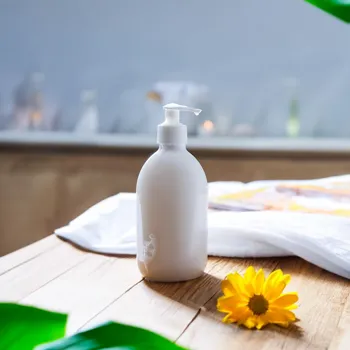
Hot water can cause color runs in clothing, color losses and shrinkage of the clothe which ruins the fabric. Cold water is preferable in most cases as it takes good care of the clothes and doesnt result in color damages.
Furthermore, its always better to turn the clothes inside out before washing, as this protects the outer layer of the clothing and avoids wear and tear. Zippers and hooks can get tangled in the laundry and damage them- to avoid this, close them before washing, or use a laundry bag.
Also, avoid overloading the washing machine. Overloading prevents the detergent from washing properly, and the clothes may not be properly cleaned. Finally, avoid excessive use of detergent in the washing machine.
Properly dry clothes: air dry for fabric preservation, avoid harsh tumble drying
Once your clothes are sparkling clean, the next crucial step is drying them properly. While tumble dryers offer convenience, they can also be harsh on fabrics, leading to shrinkage and damage. Whenever possible, opt for air drying.
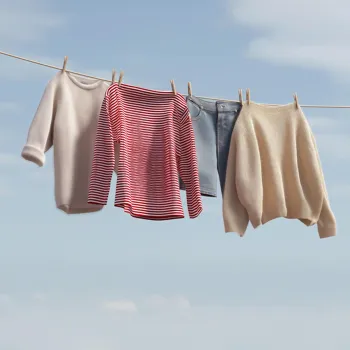
The natural breeze and sunlight not only help to preserve the fabric but also act as a natural disinfectant. However, be mindful of direct sunlight, especially for brightly coloured clothes, as it can cause fading.
The best way to air dry is to hang your clothes on a clothesline or drying rack in a shaded area. Before hanging, gently shake each garment to remove wrinkles and help it retain its shape. For delicate items like knitwear, lay them flat on a clean towel to prevent stretching.
If you must use a tumble dryer, use the lowest heat setting and remove the clothes as soon as they are dry to prevent overdrying and shrinkage. Remember, patience is a virtue when it comes to drying clothes. Taking a little extra time will save you from wardrobe disasters in the long run.
Iron clothes correctly to avoid damage and wrinkles
Ironing is an essential part of keeping clothes looking crisp and presentable. But just like washing, ironing requires a bit of knowledge and skill. Always check the care label for ironing instructions before you begin. Different fabrics require different heat settings.

Start with the lowest setting and gradually increase the temperature as needed. Overheating can damage the fabric and leave unsightly scorch marks. For delicate fabrics like silk or rayon, use a pressing cloth between the iron and the garment to protect it from direct heat.
Use steam to help remove stubborn wrinkles. If you don't have a steam iron, you can lightly spray the garment with water before ironing. Don't iron over embellishments like beads or sequins, as they can melt or get damaged. Instead, iron around them or turn the garment inside out.
Hang your clothes immediately after ironing to prevent wrinkles from reappearing. Invest in a good quality iron and ironing board to make this chore easier and more efficient.
Proper storage extends clothes' life; use quality hangers, containers, declutter
Proper storage is just as important as washing and ironing when it comes to extending the life of your clothes. Instead of piling clothes haphazardly in your wardrobe, take the time to organize them properly. Invest in good quality hangers that are appropriate for different types of garments.

Use padded hangers for delicate items like blouses and dresses to prevent them from stretching out of shape. Use wooden hangers for heavier items like coats and jackets to provide better support. Fold knitwear neatly to prevent them from losing their shape.
Store out-of-season clothes in airtight containers or garment bags to protect them from dust, moths, and mildew. Add cedar chips or lavender sachets to repel moths and keep your clothes smelling fresh. Regularly declutter your wardrobe to get rid of clothes that you no longer wear or need.
This will not only free up space but also make it easier to find what you're looking for. Remember, a well-organized wardrobe is a happy wardrobe.
Adopt simple habits to maintain clothes' quality long-term
Beyond the washing machine and the ironing board, there are several simple habits you can adopt to keep your clothes looking their best. Avoid wearing the same clothes day after day, as this puts unnecessary stress on the fabric. Give your clothes a chance to breathe and recover between wears.
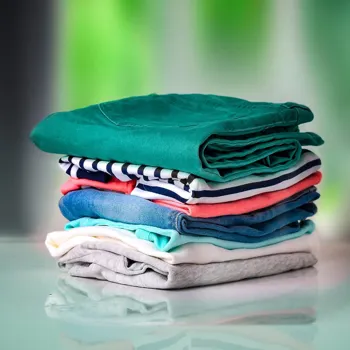
Spot clean stains as soon as they occur to prevent them from setting in. Use a stain remover that is appropriate for the type of stain and fabric. Brush your clothes regularly to remove dust, lint, and pet hair. Use a lint roller for quick touch-ups.
Protect your clothes from sharp objects and rough surfaces to prevent snags and tears. Avoid wearing delicate fabrics when you're doing activities that could damage them. Be mindful of your surroundings and avoid situations that could lead to stains or spills.
With a little care and attention, you can keep your clothes looking new for years to come, no matter where you’re wearing them, or what you’re doing.
Proper clothing care ensures longevity and style
By following these simple tips, you can ensure that your clothes remain vibrant, stylish, and long-lasting. Remember, clothing care is an investment in your wardrobe and your personal style.
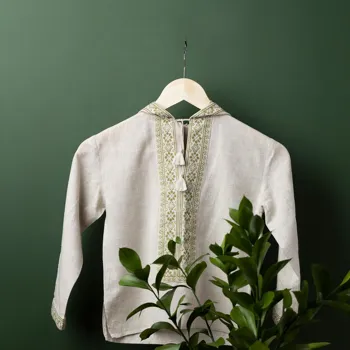
So, take the time to care for your clothes properly, and they will reward you with years of wear and enjoyment. Happy laundering!


